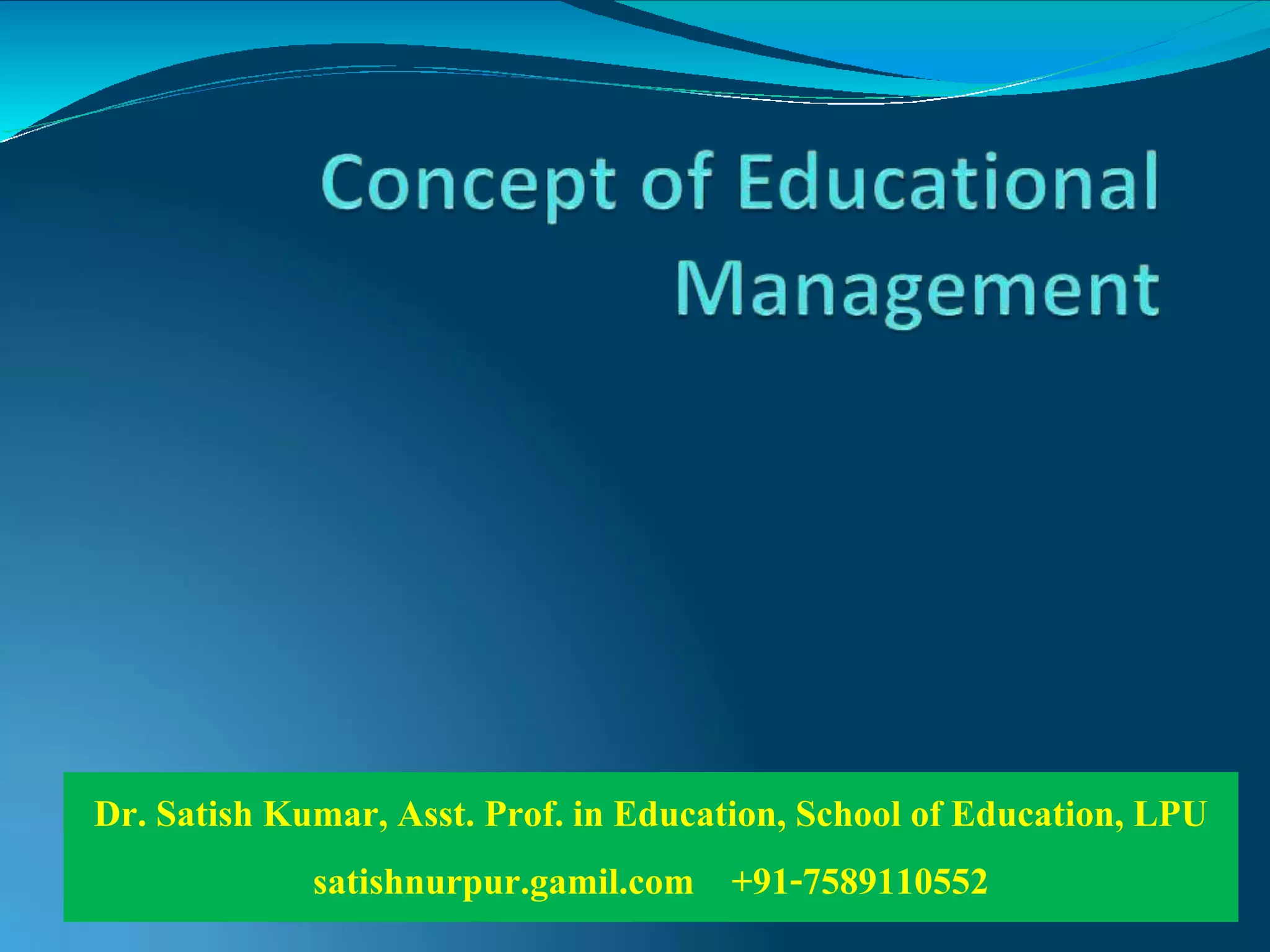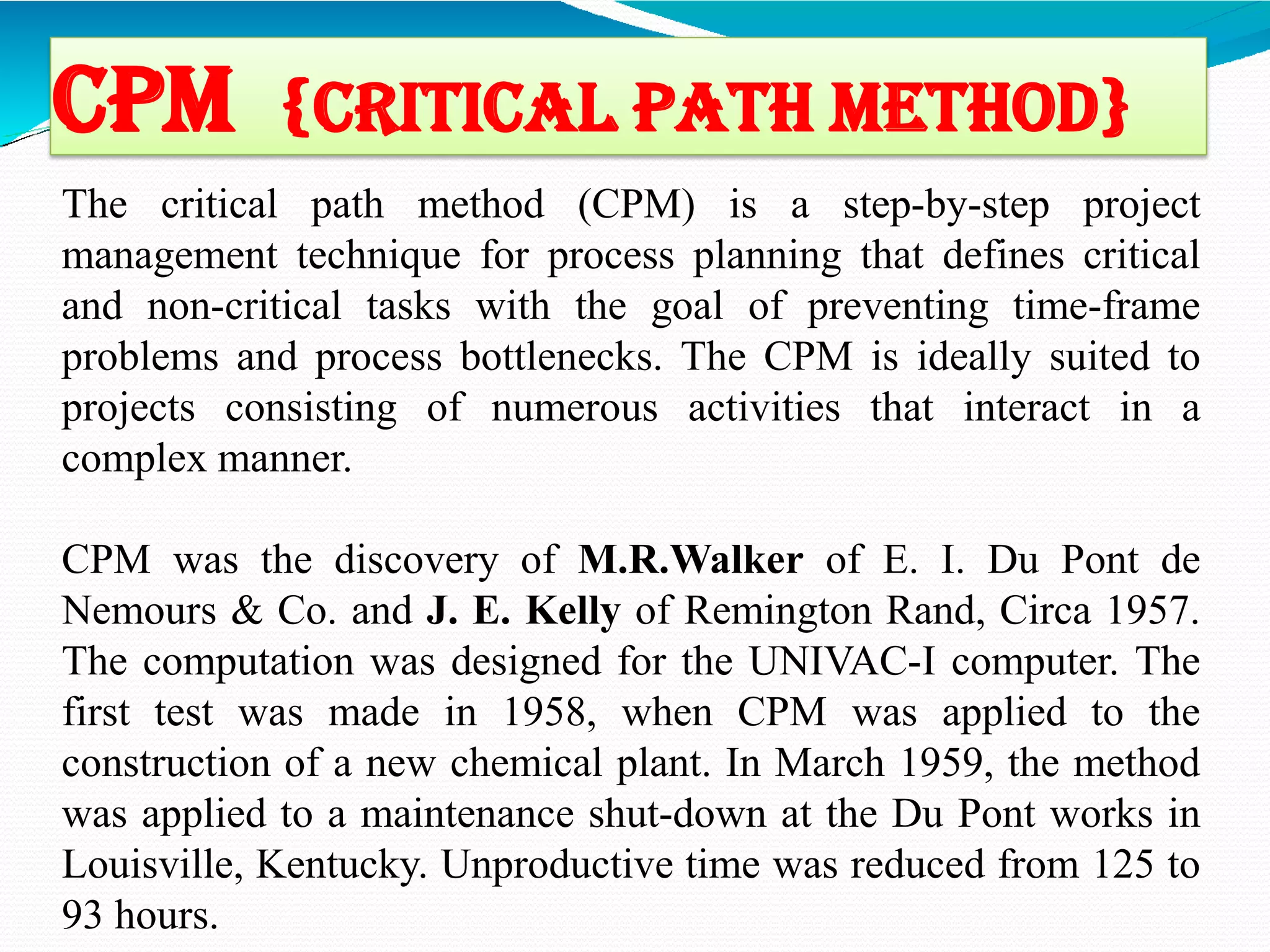Dr. Satish Kumar discusses management as both an art and a science, highlighting its role in educational settings through functions like planning, organizing, and controlling to achieve institutional goals. Effective educational management is essential for developing human resources and adapting to social and technological changes, while incorporating principles of democratic classroom management. Furthermore, techniques such as CPM and PERT are emphasized as project management tools to efficiently plan and execute complex projects in education.




































